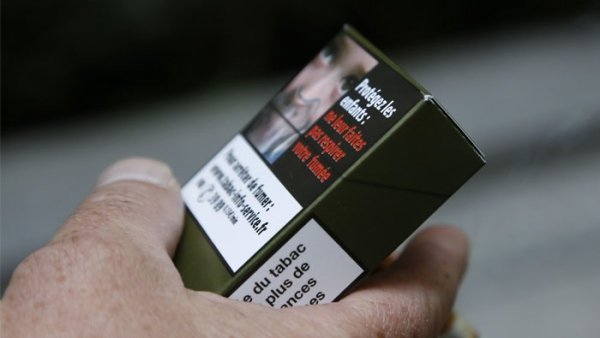
New Delhi: A parliamentary panel on Tuesday termed as "too harsh" the government's proposed 85 per cent pictorial warnings on tobacco products and recommended a drastic reduction in size, evoking sharp criticism from MPs and health experts.
With Health Ministry's April 1 deadline for implementing the 85 per cent warning just days away, chairman of the Committee on Subordinate Legislations Dilip Gandhi justified the recommendations, saying the size of the warnings have been urged to be increased from present 40 to 50 per cent.
Expressing "disappointment" over the recommendations, MPs said more than one million people in India die every year, most of whom do not have health insurance for treatment of cancer.
"The committee is of the considered view that in order to have a balanced approach, the warning on cigarette packets should be 50 per cent on both sides of the principal display area instead of 85 per cent of the principal display area...
"... As it will be too harsh as deliberated in the earlier paras, will result in flooding of illicit cigarettes in the country," the committee said in its report which was tabled in the Lok Sabha on Tuesday.
The committee also dismissed issues related to conflict of interest due to presence of beedi baron Shyama Charan Gupta in the panel and said he was not present in any of the meetings on tobacco.
It observed that the proposed graphic health warnings have the potential of "severely" affecting the Indian farmers and Indian companies with gains to unscrupulous elements who manufacture and sell illicit tobacco products and those foreign countries from where these goods are smuggled into India.
"We have increased the size of the pictorial warnings on both sides from present 40 per cent to 50 per cent," Gandhi said.
In case of beedi as well, the committee has recommended that a "practical" approach may be adopted by increasing the size of warning up to 50 per cent on one side of the beedi pack, chewing tobacco and other tobacco products namely zarda, khaini, misri and others which will be "feasible" to follow and which would also ensure that a large number of people in the trade will be saved from being rendered unemployed.
"Reduction of the pictorial warning from 85 per cent to 50 per cent, it this is correct, then I am disappointed. One million Indians die every year. Most of these people are poor Indians who do not have health insurance to cover cancer and other problems from tobacco," BJD MP Jay Panda said.
K. Srinath Reddy, President, Public Health Foundation of India (PHFI) said the earlier proposal of 85 per cent size was much stronger and any withdrawal from that will make it "less effective". He hoped the government will stand by its decision of going ahead with 85 per cent size.
Commenting on the issue of conflict of interest, Gandhi said "Gupta was absent from all the meetings (of the committee on tobacco) that have taken place so far."
Another member of the committee Idris Ali said 50 per cent warnings on both the sides of the packet are "sufficient" and one has to taken into consideration everybody's view.
Referring to a study by the Department of Commerce and another by global consultancy firm Deloitte, the panel laid stress on its findings on assessment of tobacco products in 27 countries that there has been "no impact" of large and cumbersome health warnings and "unintended consequences will be severe and irreversible".
The new pictorial health warnings covering 85 per cent on both sides of all tobacco packs was notified in October 2014 to be implemented from April 1, 2015.
However, government indefinitely delayed implementation of the 85 per cent pictorial health warnings after a parliamentary committee directed the Health Ministry to keep the notification in abeyance.
The Rajasthan High Court also directed the Health Ministry to take steps for implementation of pictorial warnings from April 1, 2016 and there should not be any further delay in implementing the 85 per cent picture health warnings on both sides of tobacco packets.
The Health Ministry has been insisting on implementing 85 per cent pictorial health warnings on both sides of all tobacco products and even submitted an affidavit in the High Court that it will be implemented from April 1, 2016.
The committee said the government needs to stress on education and awareness generation programmes that have proven to be more effective in controlling tobacco consumption and at the same time protect the livelihood of millions of tobacco workers.
The committee noted that leading tobacco companies which together account for 90 per cent of the world's tobacco production have not adopted the "excessive, over sized" health warnings by following a "pragmatic" tobacco control policy keeping in mind the livelihood of tobacco growers in their countries.
It said the new warnings have been notified by the government without any consultation with the stakeholders of the tobacco industry.